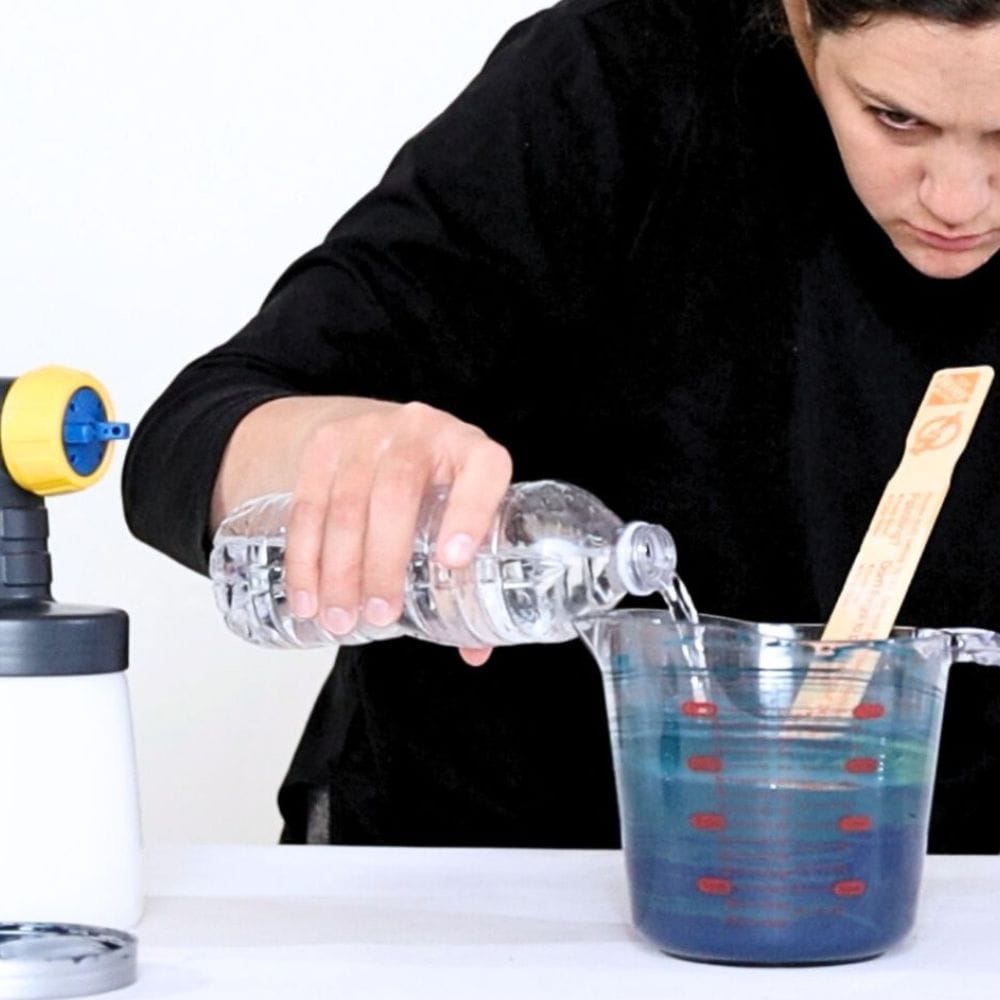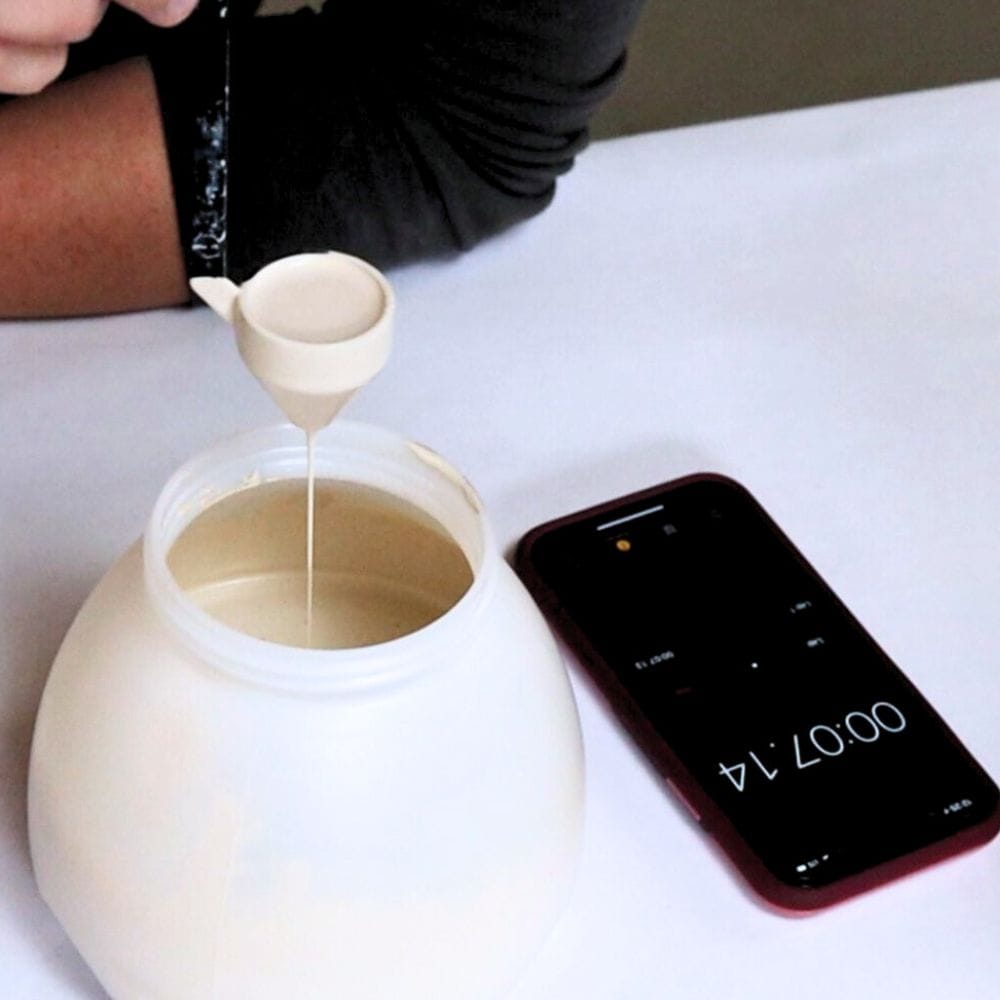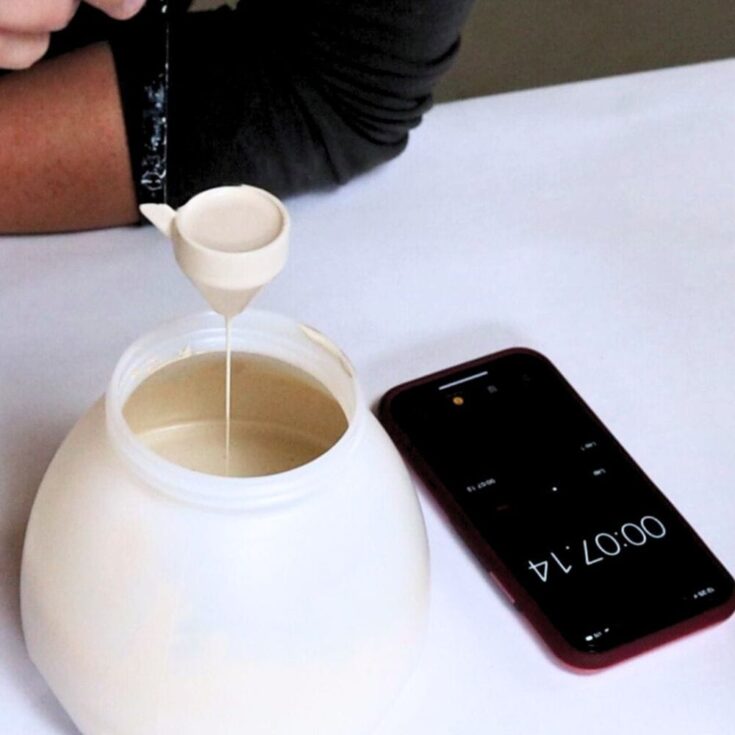Thinning Latex Paint for Wagner Sprayer
When you use a paint sprayer on furniture, you may need to thin your paints for a smoother application and finish. In this post, we will tackle thinning latex paint for Wagner sprayer, so if you have this specific brand and type of paint sprayer, keep reading!
It’s very easy – don’t be intimidated even if you haven’t done it before. Thinning paint is a common technique you need to learn if you plan to continue using your sprayer on various future projects.

Some paints can be quite thick and viscous straight out of the can, making it difficult for them to pass through the small nozzle of a sprayer.
This can result in uneven spray patterns and a less-than-perfect finish. You definitely don’t want that on your furniture, right?
The good news is that there’s a simple solution – thinning your paint.
Understanding Paint Thinning
Before we jump into the actual process of thinning paint for your Wagner sprayer, it’s important to understand why and when this technique is needed.
Thinning paint basically means adding a liquid to your paint to make it thinner and more fluid. This allows the paint to flow more easily through the sprayer. This is especially useful for getting a more professional finish, as it helps to eliminate splatters and guarantees a uniform coat.
Why Do You Need to Thin Latex Paint?
Different types of paints for furniture have different consistencies, so it’s important to know which ones need thinning and how much liquid to add.
Latex paint, in particular, is a water based paint that is generally thicker than oil based ones. It can be difficult to spray without thinning. Plus, some latex paints tend to dry quickly, which can clog the nozzle of your sprayer.
Supplies Used for Thinning Latex Paint for Wagner Sprayer
As an Amazon Associate, I earn from qualifying purchases. I also may earn from other qualifying purchases with other companies or get free product to review and use. All opinions are my own.
- Water
- Wagner Paint Sprayer
- Viscosity Cup
- Timer or Stopwatch
- Paint Filter
How to Thin Latex Paint for Wagner Sprayer
So now we know latex paint is water based. This means you will need to use water to thin the paint for your Wagner paint sprayer. If you try thinning latex paint with anything other than water, like chemical thinners, it could cause the paint to separate or become unusable. So stick with good old water for this! You can easily get it anyway.
But how much water should you add to your latex paint? The rule of thumb is to start with small amounts and mix thoroughly until you reach the desired consistency.

It’s better to add a little at a time rather than adding too much at once and having to start over. You don’t want to thin your paint too much, as it can affect the color and coverage of your final result.
You also don’t want to waste any product because you added too much water. If you do add too much water and the paint becomes too thin, you’ll have to add more paint to thicken it again. So take your time and test the consistency as you go.
If you’re using other paint and don’t know how to thin, check out our blog post about how to thin paint for Wagner Sprayer!
How to Check Paint Consistency
So how exactly do you test the consistency of your paint? It’s simple – you need a viscosity cup, which usually comes with your Wagner sprayer. If it doesn’t, you can purchase a separate viscosity cup or two on Amazon. You also need a timer or stopwatch for this step.
Dip the cup into your paint and start the timer as you pull it out. You know the paint is well thinned out when it runs out of the bottom of the cup in 25-40 seconds. If it takes longer, you may need to add more water. If it runs out too fast, add more paint.

I like the consistency to be around 35 seconds, but anywhere between 25-40 seconds is generally good.
After getting the consistency right, strain your paint through a filter to further remove any lumps or impurities. The final result should be a smooth, fluid paint that is ready to use in your Wagner sprayer!
Can you skip thinning paint for Wagner Sprayer?
Let’s be real – thinning paint for spraying your furniture is an extra step that takes time and effort. So it’s natural to wonder if you can just skip this step altogether.
Well, if you have a Wagner FLEXiO paint sprayer, then you can actually skip thinning your paint! These models are designed to handle thicker paints without any issues. So if you’re using one of these sprayers, lucky you! Check out which Wagner FLEXiO is best if you’re interested in getting one.

But even so, I personally still like to add a bit of water to my paint. Why? Because as I keep mentioning above, you get a smoother and more flawless finish with thinned paint. And who doesn’t want that for their furniture?
Plus, this helps to prevent clogging in the nozzle, which can be a major inconvenience during your project. You can learn how to tackle issues like clogging in our Wagner Paint Sprayer troubleshooting guide here.
Can you reuse leftover thinned paint in your next project?
Yes, you sure can reuse leftover thinned paint in your next project. Just make sure to store it properly in an airtight container and keep it in a cool, dry place.
You’ll have to check the consistency of the paint by the time you use it again, as it may have changed during storage. If it has become too thick, just add a bit of water to thin it out again.

However, if your leftover paint has been stored for a significant amount of time and has started to separate or develop an odd smell, it’s best to dispose of it properly and use fresh paint for your next project.
So it’s best to only thin the amount of paint you need for your current project, and not more. This way, there won’t be any leftover to store and potentially waste. But if you do end up with some extra thinned paint, as long as it has been stored properly and is still in good condition, go ahead and use it!
Now you know how to thin latex paint for your Wagner sprayer! Remember, it’s not always necessary to thin your paint, especially for some Wagner sprayers, but it can make a big difference in the overall finish of your furniture makeover.
So take your time with this process and find the right balance of water and latex paint for that perfect finish.
More Paint Sprayer Tips
- How To Clean A Wagner Paint Sprayer
- How To Use A Paint Sprayer
- Why I Use a Paint Sprayer
- Wagner Paint Sprayer Tips
- Best Latex Paint Sprayer
Follow us on YouTube to get more tips for painting furniture.
Or share your project with us on our Facebook Group and be part of our community. See you there!




